Content Management System Basics
A content management system (CMS) is a piece of software that helps users create, manage, and design their website. A CMS is used to help eliminate the need for technical oversight when making page changes.
This means you can manage your website without having to write the code from scratch.
Additionally, a CMS handles the basic infrastructure of storing files, organising web pages, and maintaining site structure so that your efforts can go into content creation.
Without a CMS, you are reliant on a web developer to make any and all changes to the website. This slows down productivity and removes the ability to make agile changes that are necessary in today’s fast-paced world.
These days nearly 60% of all websites use a CMS and that number is always increasing. The vast majority of new sites and businesses will be using a content management system rather than hard-coding them from the ground up.
HubSpot’s CMS Hub is one of the most robust and flexible of the options out there.
What is CMS Hub?
CMS Hub is HubSpot’s answer to what content management can become, arguably, with its seamless integration with the HubSPot CRM it is becoming more like a Digital Experience Platform (DXP) and less like a traditional CMS. Unlike other content management systems out there, CMS Hub easily ties into the rest of the HubSpot ecosystem, making it more than just a website and turning it into one of your most useful sales and marketing tools.
HubSpot’s holistic approach to platform creation enables full integration of its different Hubs. Each Hub is software designed to equip different areas of your business with the tools that it needs to grow.
HubSpot’s current Hubs are:
Marketing Hub
The HubSpot Marketing Hub is an all-in-one inbound marketing platform designed to empower marketers and make generating leads easier and more effective. With tools like email marketing, ad management, automation and campaign reporting built-in, the HubSpot Marketing Hub is a powerful and user-friendly platform for growing your business.
(Read more: HubSpot’s best tools for working from home)
Sales Hub
HubSpot’s Sales Hub consists of a series of tools that enable your sales team to sell better. The Sales Hub helps give you deeper insights into prospects and customers, automates friction-inducing tasks and streamlines the sales process.
From automated email sequences to deal management, the Sales Hub has a wide range of helpful tools to boost your organisation’s sales.
Service Hub
The Service Hub is a powerful suite of tools that helps your service teams connect with customers and turn them into promoters of your business. This Hub is dedicated to delighting your customers and making their experience both engaging and enjoyable.
You can use tools like the built-in ticketing system to keep track of customer queries and responses, the Knowledge Base to answer frequently asked questions before they come to your team, and the rep productivity performance to see who in your team is experiencing the most successful customer interactions.
Operations Hub
Operations Hub was born from the operational challenges HubSpot has seen customers face repeatedly to create a better solution for scaling businesses. It consists of three core features: data sync, programmable automation and data quality automation. Read more here.
CMS Hub
HubSpot’s CMS Hub creates amazing customer experiences by being flexible enough for your marketers and vigorous enough for developers.
The CMS Hub is unlike traditional CMS’s which can be frustrating experiences for marketers and developers alike. CMS Hub is built to delight your teams by being easier to use, easier to optimise, and easier to protect. This Hub includes features that are focused on architecting the optimal end-user experience. It is designed around adapting to your customer and this translates into a profitable growth investment.
Where a traditional CMS can feel like merely an unavoidable business expense, the HubSpot CMS Hub is a piece of software built on a core premise of helping you gain visitors, convert leads, and grow your business.
Included with these Hubs is the HubSpot CRM which is a customer relationship management platform which underpins the other Hubs and facilitates the deeper insights and personalisation that makes HubSpot’s proposition so impressive. The CRM provides tools to encourage better collaboration as well as robust contact records that mean your whole team is on the same page.
*All of the HubSpot Hubs are available at both Professional and Enterprise levels which provide a different number of tools suited for your business’s growth needs.
CMS Hub Packages
Starter
The CMS hub starter package is aimed at small to medium size businesses who want their website to sit on a modern CRM driven platform. With this package, HubSpot is really going after the no-code free website builder market.
In terms of the cost per month (£19) and the tools and functionality you get, the value of this package is incredible.
You can expect things like hosting, the drag and drop editor, and website themes all included in the price. It makes sense for any business who is using either the free tools or the starter tools to move their website over as well.
Professional
The CMS hub professional package is where things start to get really interesting and a little smarter.
First off with pro you now get the ability to use CRM data in new and interesting ways with the website. You can start to use functionality like Smart content and dynamic personalisation which enable deeper levels of engagement with your audience. Pro also unlocks a lot of the SEO and content strategy tools.
The pro package (£297 p/m) is really for medium sized businesses who have a content strategy and marketing team in place and are looking to really use their website as a key marketing channel.
Enterprise
The top package and the one for enterprise level businesses who want all of the advanced tools offered in the previous packages, but also want additional security, web app functionality and adaptive testing tools.
Most businesses that build their website on the Enterprise level CMS package will already have been using HubSpot as a CRM system successfully and will know the advantages of bringing their website onto the platform too.
This package suits large websites that need multiple areas partitioned off, for example if you need a members area / portal where users have to login. In terms of security, Enterprise comes with features like SSO (Single sign on), activity logging and site performance monitoring. There is also the ability to host additional brand domains if you have multiple brands under one parent brand.
While it’s not cheap (£990 p/m) it does cover everything a large Enterprise sized business could need for their website.
CMS Hub for Marketers
HubSpot’s CMS Hub is an ideal solution for businesses that need the flexibility to have their marketers make changes to their website. With its easy-to-use interface, CMS Hub can enable marketers to not only make changes to your website but to also use the site to perform more effective marketing. The Hub is full of tools that enhance your marketing team’s ability to connect with prospects.
These are the tools in the HubSpot CMS Hub that make marketers’ lives easier:
Drag-and-drop editor
With the drag-and-drop editor, your developer can create page templates that are easily editable by your marketing team. Now, when changes need to be made quickly, your marketing team can create and edit content without needing to take time away from your development team.
By using the modules within the drag-and-drop editor, you can customise templates and cloned pages, giving marketers the power to both make changes to existing pages and create new ones as the need arises.
This also means that any time your marketing team identifies areas of opportunity for conversion rate optimisation, they can make modifications in a timely fashion.
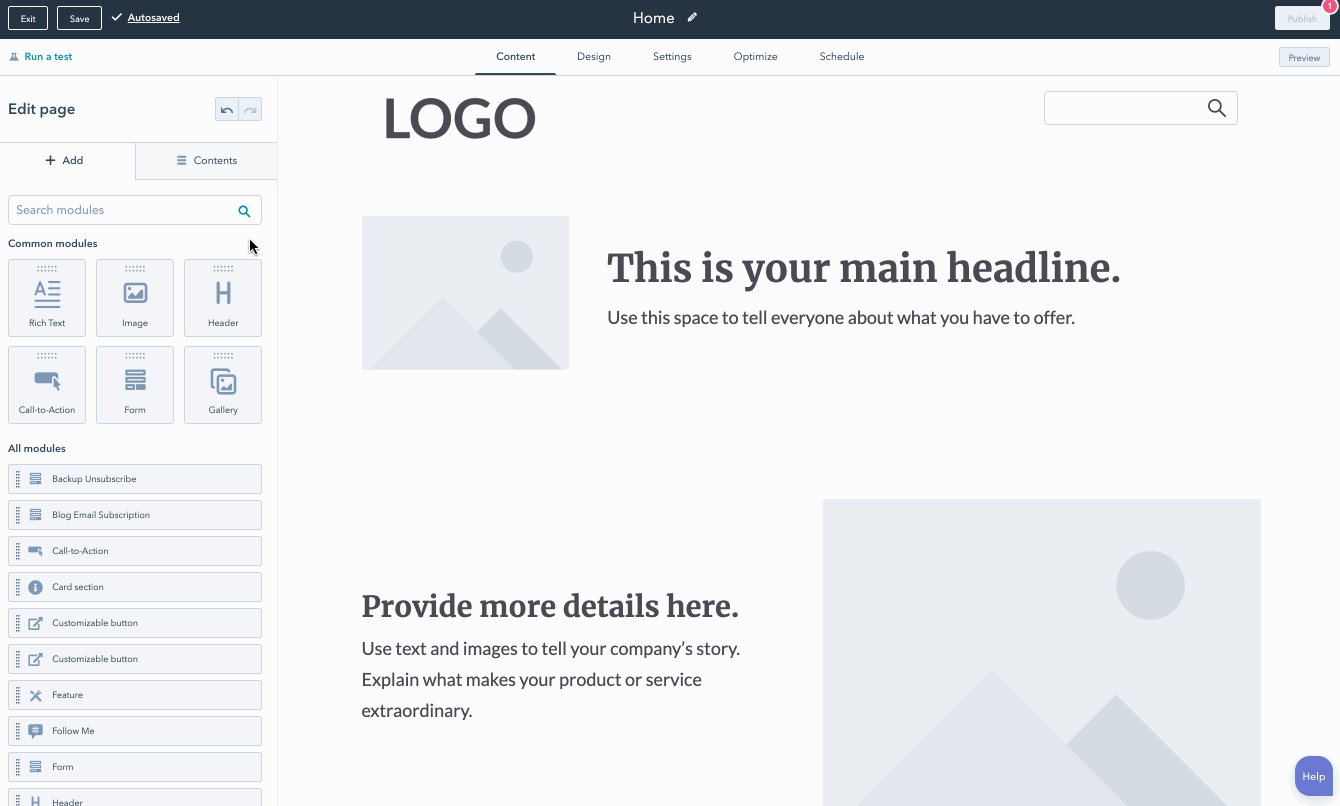
Forms and pop-ups
Included in CMS Hub are form and pop-up builders. Use easy-to-add forms to your pages and landing sites to help you generate leads. Then use the reporting feature to compare the performance of each one to see what is most successful.
With the in-built pop-up creator, you can design and generate pop-up forms on your website to capture visitor attention at just the right time.
Live chat
Along with the forms and pop-ups, HubSpot’s CMS Hub also enables marketers to interact directly with website visitors through the live chat function. Increasingly, customers want information faster than ever and are looking for businesses that they can have direct, personal access to without going through a formal ‘contact us’ page. Conversational marketing is on the rise and 82% of consumers rate an immediate response as ‘very important’ when they have a question.
Reporting
From within the HubSpot CMS Hub, you can easily access reporting tools which allow you to analyse important statistics to understand website effectiveness. In HubSpot, you will find reports on website traffic, page performance, and contact attribution. These features will enable you to determine how well your website is functioning and if it is doing the job of bringing in new visitors.
SEO
The HubSpot SEO tool automatically provides suggestions for how best to optimise pages across your site. The suggested changes can also be implemented from within the tool itself.
This feature also helps you create topic clusters that organise your content into an infrastructure that is easily navigable for search engines to crawl and properly index your site. If you use Google Search Console, this can be easily integrated with HubSpot to provide even more insight.
Multi-language content
CMS Hub is designed for growing organisations and, as such, has recognised the need for web content to be available in multiple languages. In-language variants of individual pages will be automatically associated, which makes managing and optimising this content easier as you scale.
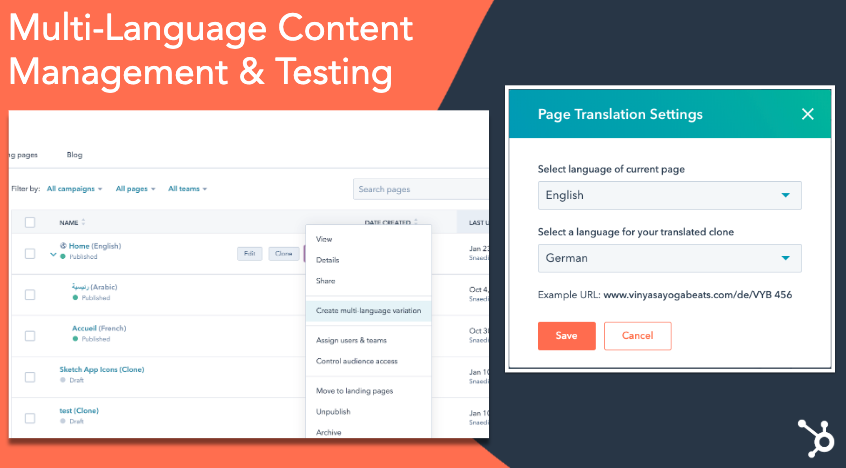
Personalisation
Using HubSpot’s Smart Content feature, you can create a more personalised experience for all visitors to your website, even if they’re anonymous.
With Smart Content, you create different rules depending on the kind of information you would like to display. This content can change based on things like location, persona fit, or activities the user has performed, culminating in a user experience that feels tailored to each visitor.
In addition, you can use personalisation tokens on webpages. This enables you to show any property values for CRM objects like contacts or companies for any tracked visitor. A simple use case is that you can present a returning customer with a page header that says ‘Welcome back [firstname]’. The more you understand about using personalisation tokens the more relevant and personalised you can make the customer experience.
A/B testing
With the A/B testing feature in HubSpot CMS Hub, you can readily test different variations of both landing pages and emails. The tool enables marketers to gain insight into what is working and what may need to change, helping them get better conversions.
Content partitioning*
In many enterprise organisations, there are multiple areas of the business that will need to create content simultaneously. By utilising HubSpot’s content partitioning, you can grant access to certain pieces of content based on the teams to which they are relevant. This means that blogs and other content created by one team won’t influence or distract teams in other parts of the business.
Keeping your content partitioned can aid productivity and help to keep the back-end of your website clean and easily navigable.
Memberships*
Memberships are similar to content partitioning in that you can limit access to content. However, the memberships feature enables your business to limit access to HubSpot-hosted pages based on sign-ups, paying customers, or other groups by creating smart lists with access rights that you choose. Now you can effortlessly create an area of your website for VIP or paid-for content.
*These tools are only available in CMS Hub for Enterprise.
CMS Hub for Developers
At ClientsFirst, our developers love building websites on the HubSpot CMS Hub: it is not hard to see why. HubSpot has made every effort to make developing a site on its CMS Hub simple and straightforward. The following features are key areas that will simplify your developer’s workload.
Security
HubSpot takes website security seriously. With their 24/7 security monitoring and threat detection, your site will be better defended against attacks. HubSpot’s security team keeps your CMS, blogs, and landing pages safe by providing diligent and thorough monitoring.
Dynamic content with HubDb
By using HubDb, you can create data tables that display on your website or landing pages. Then, when that content needs updating, CMS Hub will update the content anywhere that the table is referenced, preventing your teams from having to hunt down each time the table is used. This both saves time and ensures that the update doesn’t get missed on individual uses.
This is especially helpful for things like calendars, product catalogues, employee listings, and resource libraries.
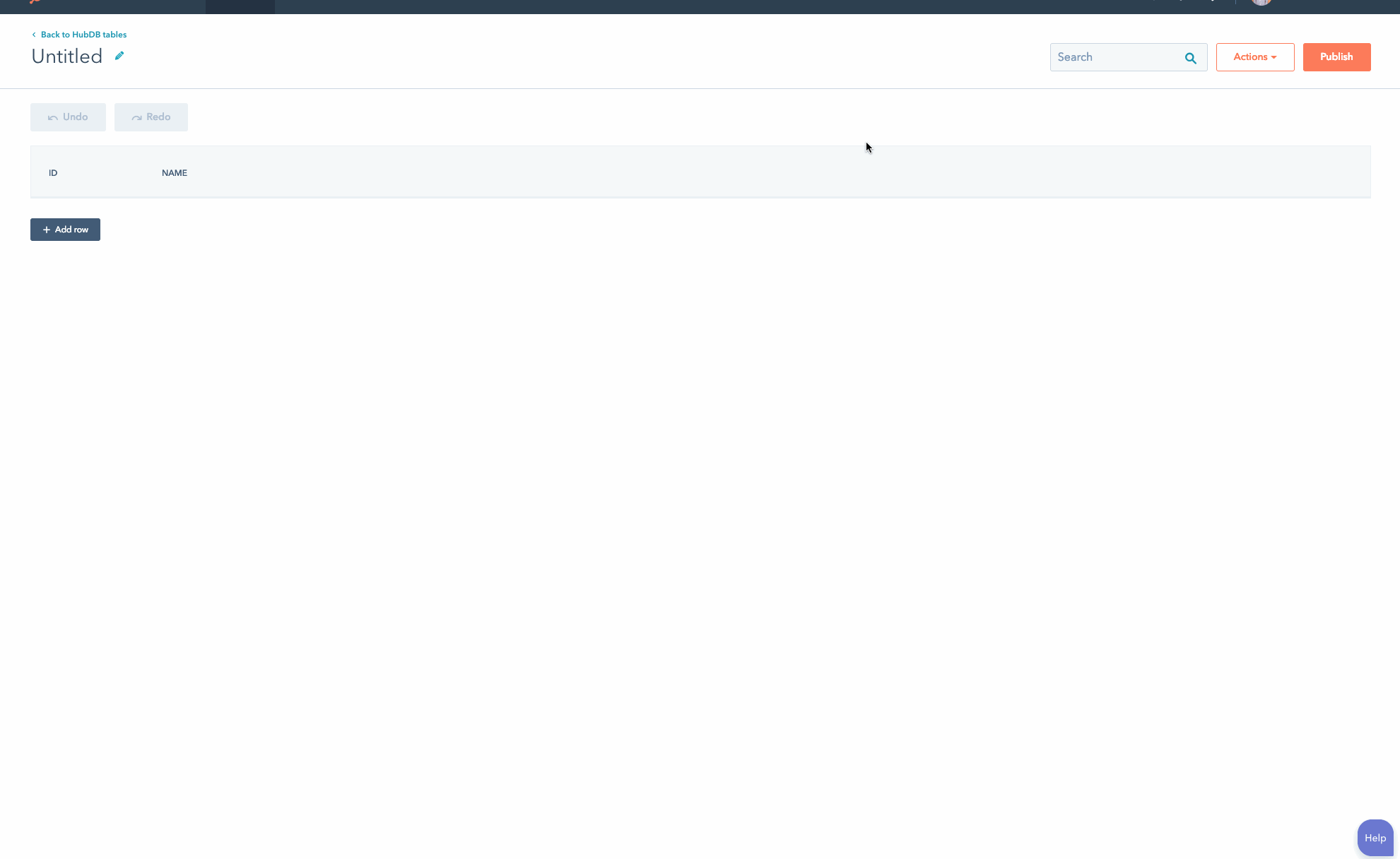
Global CDN
HubSpot’s CMS Hub comes with a built in content delivery network (CDN). A global CDN means that your website will be accessible from anywhere in the world without losing speed. A CDN creates a copy of your web assets which allows the cached files and stores them on secure local servers.
This means that once your website has been visited one time in a region, it can be loaded from the local server, increasing page speed and visitor enjoyment. It can also support your website during times of high traffic by distributing the visitors through multiple servers.
Multiple domains*
When setting up a CMS for enterprise businesses, it’s important to understand that there are often multiple areas of the company being managed. Frequently, this means more than one website and more than one domain.
Now, with CMS Hub Enterprise, organisations can manage multiple domains from within one Hub. This means that any workload crossover and content creation for multiple areas of the business can be managed from within the same CMS Hub rather than purchasing a subscription for each domain individually.
Adaptive page testing*
Adaptive page testing is the next step up from simple A/B testing. With an A/B test, you can only measure the success of one variation over another. This new feature in the CMS Hub, however, lets you test up to five variations of pages. HubSpot will continuously test each page and serve the highest performing version to your visitors.
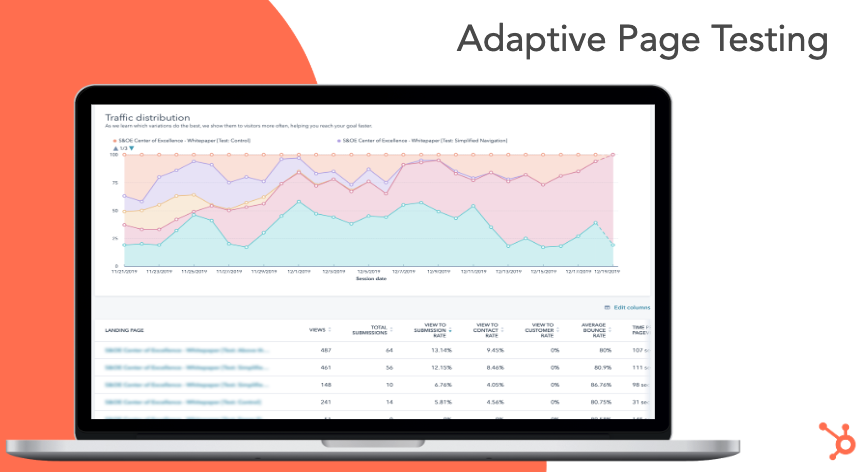
Code alerts*
Code alerts create a centralised view of any issues that are identified with your HubSpot CMS Hub. Developers can use these alerts to fix any issues that may have occurred and optimise your website, thereby improving both visitor experience and website performance.
Serverless functions*
With HubSpot CMS Hub, you can seamlessly add interactive elements to your pages such as event registration, guest books and dynamic calculators. The serverless functions, which are powered by AWS Lambda, enable your developers to create a more engaging visitor experience. Interactivity is a sure-fire way to increase conversions and visitors returning to your site.
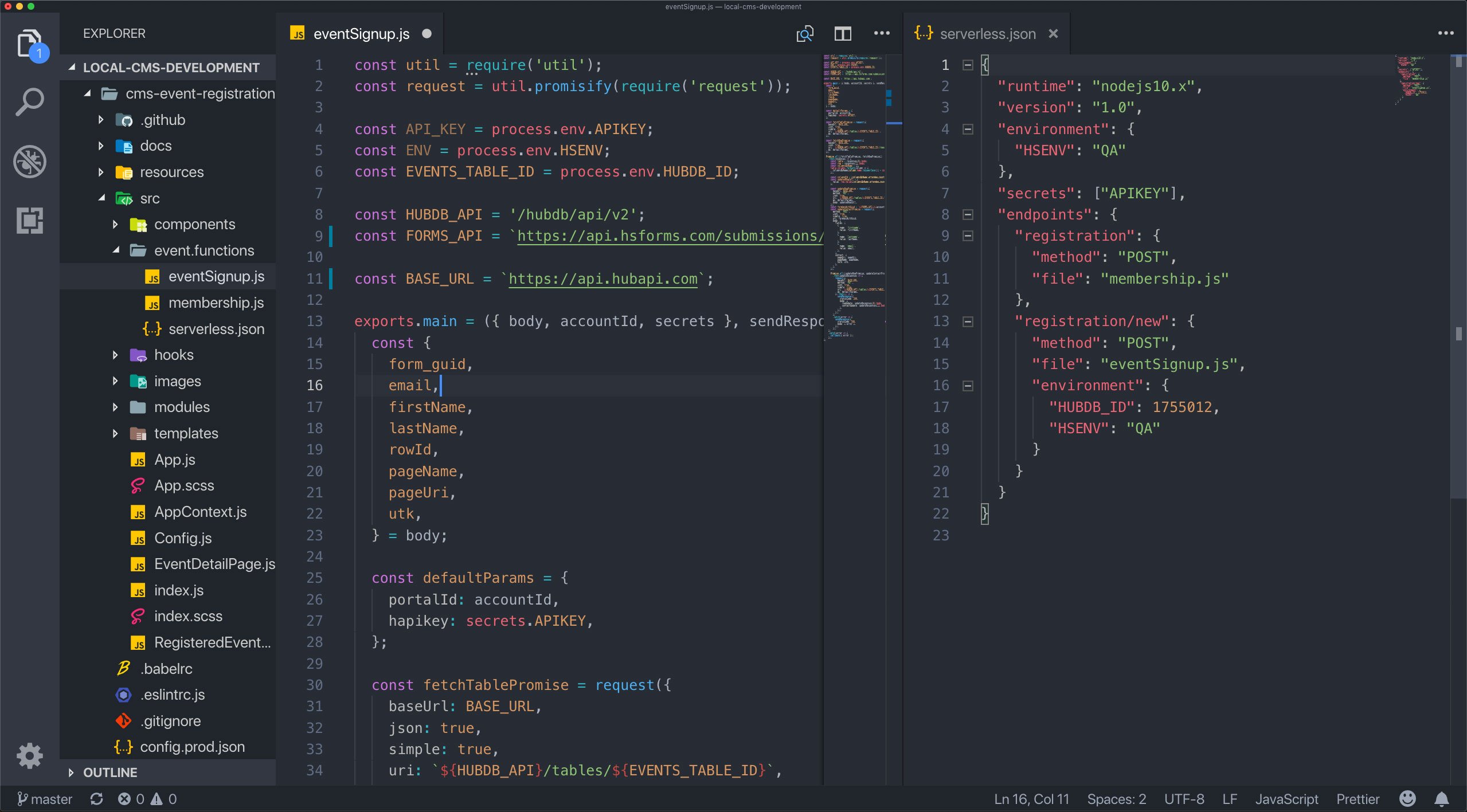
Themes
By using a theme to start your HubSpot website build from, your web developer will be able to start the process with a clear vision and more time to put into creating your perfect site. Themes, which can be found on the marketplace, guarantee that your website content stays consistent throughout and prevents pages standing out as odd or off-brand.
Additionally, there are theme-specific capabilities that enhance the abilities of your development team such as animations and layouts that they may not have the time to code themselves.
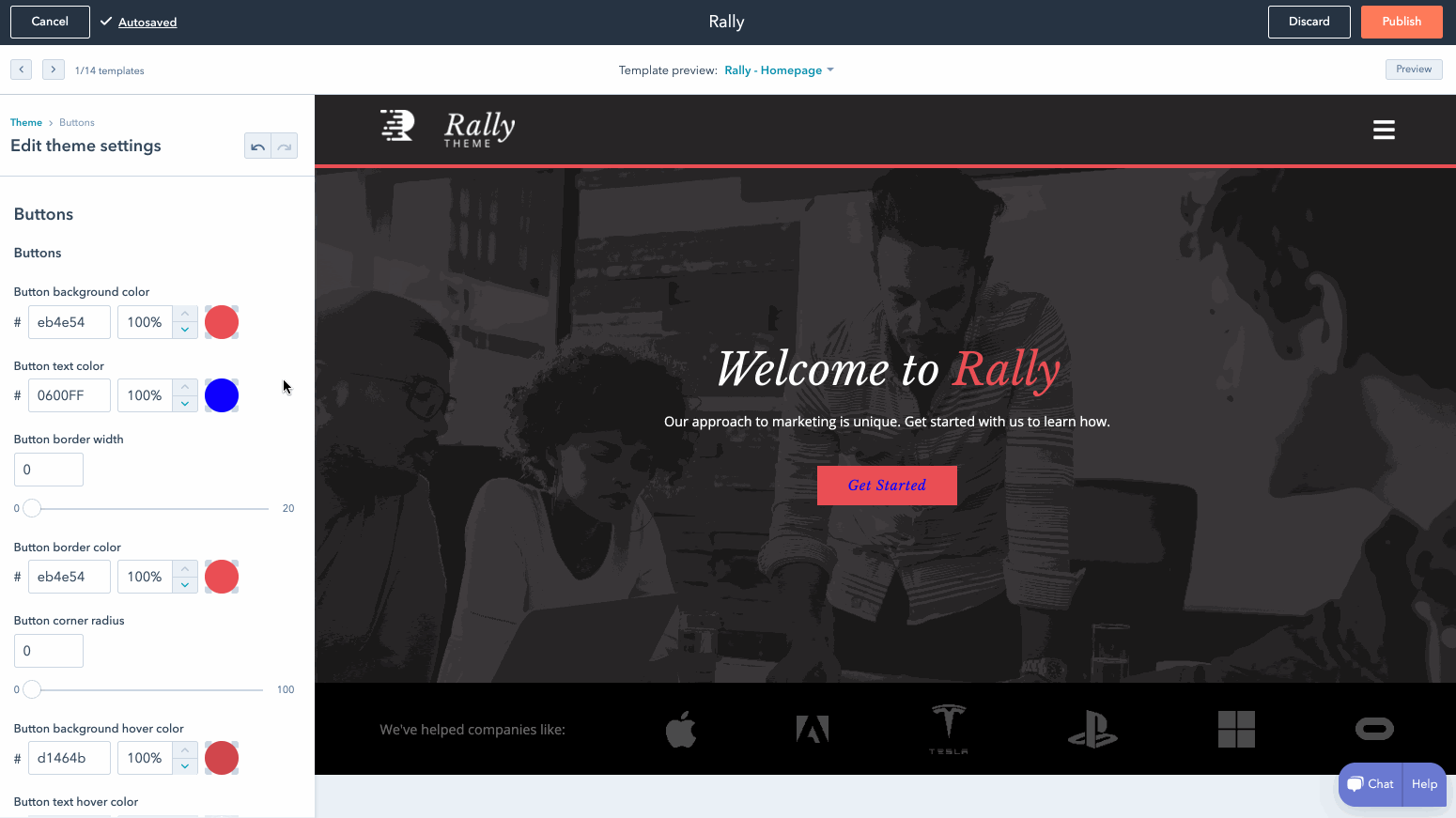
Reverse proxy support*
Reverse proxy support means that your website will be accessible from anywhere in the world without losing speed. A reverse proxy server retrieves resources on behalf of your website and presents it as though it all came through the proxy server.
So, if you have a website hosted at thisisanexample.co.uk, which is not hosted on HubSpot, you can have a HubSpot managed blog at thisisanexample.co.uk/blog and it would appear to be hosted on the same server.
*These tools are only available in CMS Hub for Enterprise.
Getting the most out of CMS Hub
For CMS Hub to work at its optimal level and give your organisation the greatest value, there are a few considerations to make. Although CMS Hub is a powerful tool on its own, you’ll need to ensure that it is being implemented in a way that lends itself to frictionless modification and user-centred architecture building. So what will you need to get the most out of CMS Hub?
An experienced developer
The first step to getting the best result from your CMS Hub subscription is to work with a developer you trust to have the experience needed to bring your website to life. A properly experienced HubSpot web developer won’t need to take the time to learn the platform and will be able to draw more out of the CMS Hub and can truly share with you the art of the possible.
As HubSpot is a different kind of development than other CMS’s; you will want to ensure that the team building your website has both experience and qualifications in HubSpot development and implementation.
HubSpot provides its partners with dedicated training to ensure the highest quality of build, so it is imperative to do your due diligence in making sure your developer has the necessary skills available.
Clean back-end build
Something that we see quite often are businesses who have started with HubSpot CMS and, instead of having the streamlined and robust experience they were expecting, have struggled to make it work for their business. This is usually down to the internal workings being developed in a haphazard way without the end-user in mind.
Often, these organisations end up either abandoning the CMS prematurely or requiring another agency to come in and fix what has been done. It is much simpler to start off on the right foot and work from a clean and approachable build.
Repeatable modules and templates
As part of developing in a seamless manner, it is important that your web developer builds your site with your team at the forefront of their process. One way of ensuring your team is able to make the most of CMS Hub is for your HubSpot-certified web developer to build in modules and templates that you can use repeatedly through the drag-and-drop editor.
These repeatable pieces are key to getting the flexibility that a modern, agile business needs for growth.
Conversion rate optimisation
Conversion rate optimisation (CRO) is the process of looking at your content and website and enhancing them to increase conversions. This process is critical to having a website that runs at peak performance and is working for you. Once your website is live, you will want to continue monitoring and analysing it for effectiveness.
As you are measuring CRO for your website, you’ll want to use the A/B testing tool to make hypotheses about what will improve your numbers and then do comparative tests. Constant improvement can feel overwhelming, but your website can be your biggest generator of leads if you put the time and energy into it.
It is also important to consider the development approach that you want to take. There are important differences between a traditional, project-based build and Growth-Driven Design.
How to build a new website on the HubSpot CMS Hub
There are different methodologies of web design and development and knowing the difference can save you a lot of hassle in the long-run.
Traditional web projects
Traditional web design is likely the method with which you are most familiar. It follows the expected pattern of briefing the project, building the project, launching the project, and ending. At this point, you have a website that you have (hopefully) approved along the way and is exactly what you asked for.
What you may not have, however, is a website that performs the tasks you need it to perform.
While there is something to be said about the satisfaction of being given a fully fleshed-out piece of work that has all of the bells and whistles, it can be incredibly disheartening when that very pretty website doesn’t do more than just look good.
A Growth-Driven Design or Minimum Viable Product approach
Growth-Driven Design (GDD) and Minimum Viable Product (MVP) are similar approaches that are relatively new to web design, although MVP has been around for a while in the software development world. The approach aims to bypass many of the difficulties that arise from traditional web design.
The method starts with what is called a ‘launchpad’ website. This is a smaller site with the minimum number of pages to make your website functional. With the quick turnaround of creating a site like this, it’s easier to launch new brands and redesigns as well as lending focus to the pages that matter.
From this initial site, you entrust your development team to partake in constant, iterative improvements. Instead of making assumptions that you know what is best, this approach allows visitors to prove you right or wrong.
The data gathered about user experience and website traffic informs how to continue the development of your website in a way that encourages growth and higher conversion.
The Karman Digital Approach
At Karman Digital, we work on a hybrid method of web design. We take the best elements of each web development process to provide our clients with a high performing website based on data-driven decisions.
Planning is an essential part of the process.
Drawing insight from analytics, site and SEO audits, buyer personas, and your buyer journey, we aim to deliver dynamic, powerful websites that create impact.
Now that you know all about the HubSpot CMS Hub and what it takes to make it work for your business, reach out to us here or set up a quick chat.